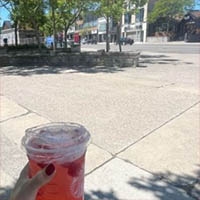You are what you wear?
Halloween started out as a pagan
day to remember lost loved ones, but
in modern years has become a day of
dressing up in costumes and sauntering
around the block for treats; jacko’-
lanterns were placed in front of
houses to ward off evil spirits.
Costume festivities were first introduced in various parts of Europe: the first instance of children dressed in a disguise and going door-to-door for treats was in Scotland and Ireland in the late 1800s. This tradition made its way to Kingston, Ontario in the early 1900s.
This practice has been popularized to include fictional characters, celebrities, and other fantasy characters. Some mass-produced costumes are pop culture references that represent ethnic cultures.
Guy Williams, manager of Fanshawe’s First Nations Centre said these representations are “inappropriate” s and that he would “like to think that we’re moving past that”. Williams said he believes that the reason why people dress up in culturally charged clothing stems from “not knowing”. He defines the act itself as “ignorant, but not in a negative way”.
Instead of believing in malicious intent, he said believes that some people “don’t see it from the perspective that they are making a mockery of the culture. They don’t see it as dehumanizing a culture”.
“I don’t think that people are thinking that. In their minds, it’s fun and games. Sometimes people don’t think of the deeper issues [that are rooted in committing certain act],” Williams said.
While some people harp on some who choose wear headdresses as part of a costume, Williams said that this perpetuates “a lack of understanding”, in how Indigenous (and other ethnic) people dress. “Actually, only a few nations would have a full headdress. Not all chiefs wear that,” Williams said.
These characterizations of ethnic cultures lead to an unrealistic representation of minority groups and a bastardization of cultural nuances.
Williams urges people who are curious about other cultures to “go learn; largely speaking Canadian people don’t have a large understanding of the history of Indigenous people: our language and our experiences”. This applies to other cultures as well.
“There’s nothing wrong to want to learn a little bit more,” Williams said.
In fact, he said he believes that starting a conversation will open up people’s eyes. In one instance, he was asked to talk about residential schools casually. Though it was a very traumatic experiences, he understood that the person only “wanted to know more” and commends them for “trying to understand the other side of the colonial conversation”.
Part of the “Indigenous belief is that [we] respect all nations,” Williams said.
Instead of letting differences pull each other apart, he said he believes that “there’s nothing wrong with differences”, as long as there is a sense of mutual respect.
Williams said that people should “talk to people and get to know them”, because everyone comes from diverse backgrounds.
Even within the realm of Indigenous populations, there are 53 different languages and no two cultures are exactly the same. They each share some things in common, but also celebrate each other’s differences.
By choosing to slap on a mass-produced ethnic Halloween costume, people choose to ignore the complexity of cultures and are not well-informed about the implications of the outfits they wear.
Costume festivities were first introduced in various parts of Europe: the first instance of children dressed in a disguise and going door-to-door for treats was in Scotland and Ireland in the late 1800s. This tradition made its way to Kingston, Ontario in the early 1900s.
This practice has been popularized to include fictional characters, celebrities, and other fantasy characters. Some mass-produced costumes are pop culture references that represent ethnic cultures.
Guy Williams, manager of Fanshawe’s First Nations Centre said these representations are “inappropriate” s and that he would “like to think that we’re moving past that”. Williams said he believes that the reason why people dress up in culturally charged clothing stems from “not knowing”. He defines the act itself as “ignorant, but not in a negative way”.
Instead of believing in malicious intent, he said believes that some people “don’t see it from the perspective that they are making a mockery of the culture. They don’t see it as dehumanizing a culture”.
“I don’t think that people are thinking that. In their minds, it’s fun and games. Sometimes people don’t think of the deeper issues [that are rooted in committing certain act],” Williams said.
While some people harp on some who choose wear headdresses as part of a costume, Williams said that this perpetuates “a lack of understanding”, in how Indigenous (and other ethnic) people dress. “Actually, only a few nations would have a full headdress. Not all chiefs wear that,” Williams said.
These characterizations of ethnic cultures lead to an unrealistic representation of minority groups and a bastardization of cultural nuances.
Williams urges people who are curious about other cultures to “go learn; largely speaking Canadian people don’t have a large understanding of the history of Indigenous people: our language and our experiences”. This applies to other cultures as well.
“There’s nothing wrong to want to learn a little bit more,” Williams said.
In fact, he said he believes that starting a conversation will open up people’s eyes. In one instance, he was asked to talk about residential schools casually. Though it was a very traumatic experiences, he understood that the person only “wanted to know more” and commends them for “trying to understand the other side of the colonial conversation”.
Part of the “Indigenous belief is that [we] respect all nations,” Williams said.
Instead of letting differences pull each other apart, he said he believes that “there’s nothing wrong with differences”, as long as there is a sense of mutual respect.
Williams said that people should “talk to people and get to know them”, because everyone comes from diverse backgrounds.
Even within the realm of Indigenous populations, there are 53 different languages and no two cultures are exactly the same. They each share some things in common, but also celebrate each other’s differences.
By choosing to slap on a mass-produced ethnic Halloween costume, people choose to ignore the complexity of cultures and are not well-informed about the implications of the outfits they wear.














